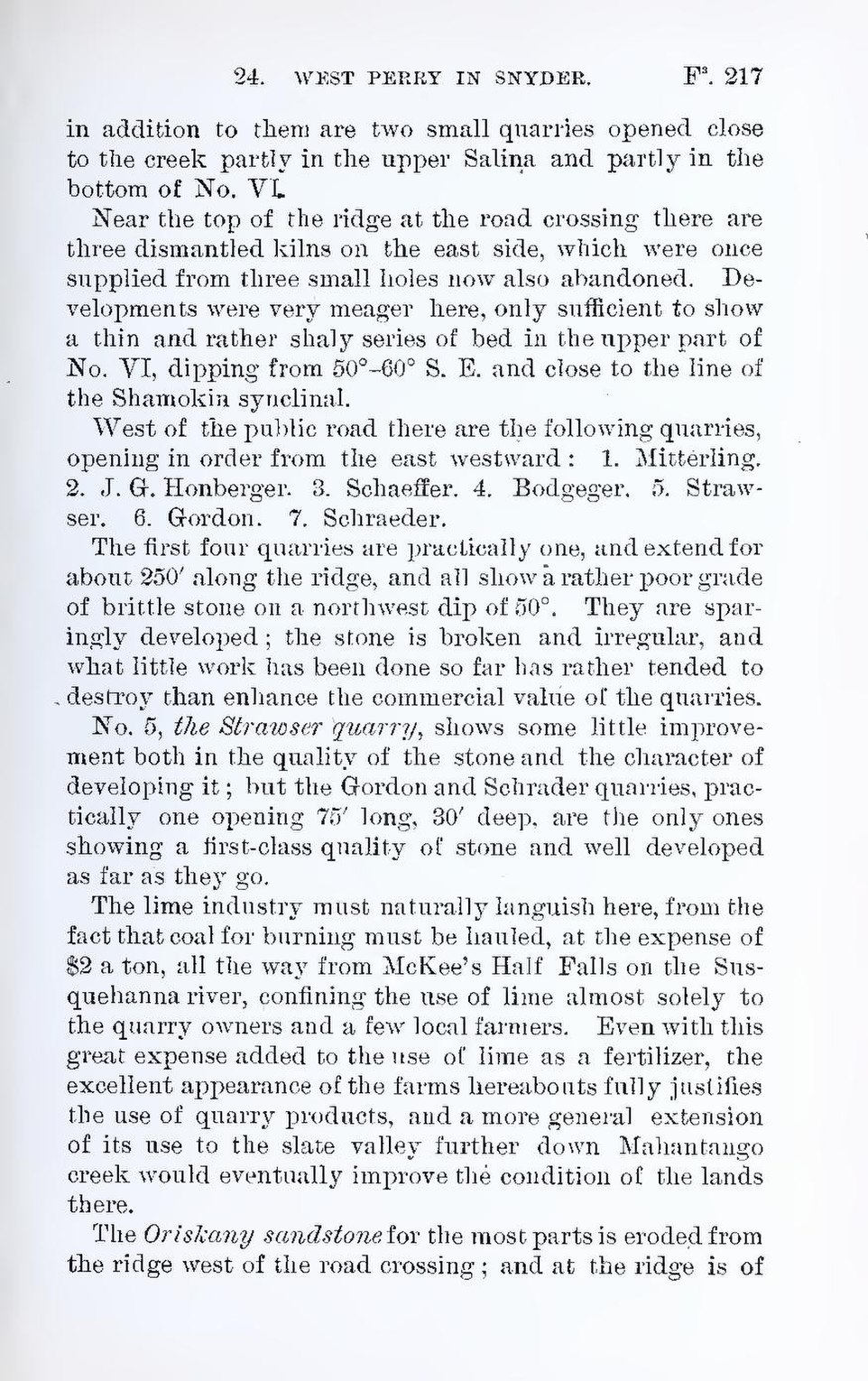in addition to them are two small quarries opened close to the creek partly in the upper Salina and partly in the bottom of No. VI.
Near the top of the ridge at the road crossing there are three dismantled kilns on the east side, which were once supplied from three small holes now also abandoned. Developments were very meager here, only sufficient to show a thin and rather shaly series of bed in the upper part of No. VI, dipping from 50°–60° 8, E. and close to the line of the Shamokin synclinal.
West of the public road there are the following quarries, opening in order from the east westward: 1. Mitterling 2. J. G. Honberger. 3. Schaeffer. 4. Bodgeger. 5. Strawser. 6. Gordon. 7. Schraeder.
The first four quarries are practically one, and extend for about 250′ along the ridge, and all show a rather poor grade of brittle stone on a northwest dip of 50°. They are sparingly developed; the stone is broken and irregular, and what little work has been done so far has rather tended to destroy than enhance the commercial value of the quarries.
No. 5, the Strawser quarry, shows some little improvement both in the quality of the stone and the character of developing it; but the Gordon and Schrader quarries, practically one opening 75′ long, 30′ deep, are the only ones showing a first-class quality of stone and well developed as far as they go.
The lime industry must naturally languish here, from the fact that coal for burning must be hauled, at the expense of $2 a ton, all the way from McKee’s Half Falls on the Susquehanna river, confining the use of lime almost solely to the quarry owners and a few local farmers. Even with this great expense added to the use of lime as a fertilizer, the excellent appearance of the farms hereabouts fully justifies the use of quarry products, and a more general extension of its use to the slate valley further down Mahantango creek would eventually improve the condition of the lands there.
The Oriskany sandstone for the most parts is eroded from the ridge west of the road crossing; and at the ridge is of
